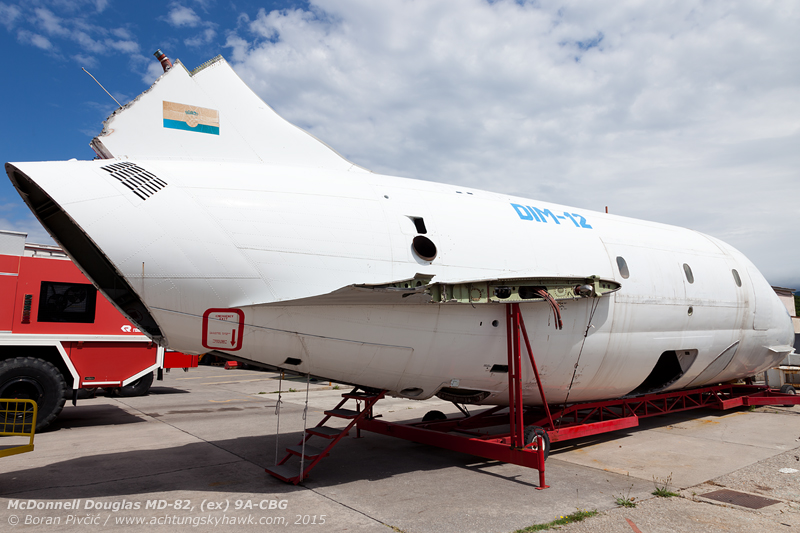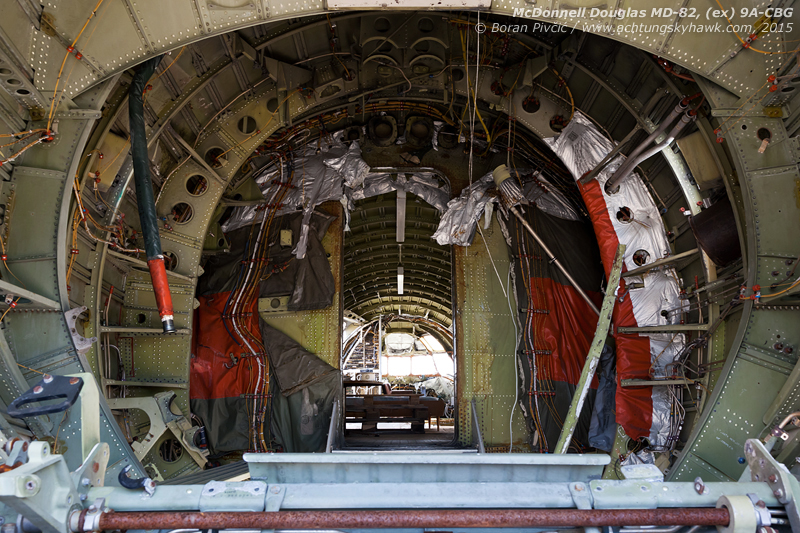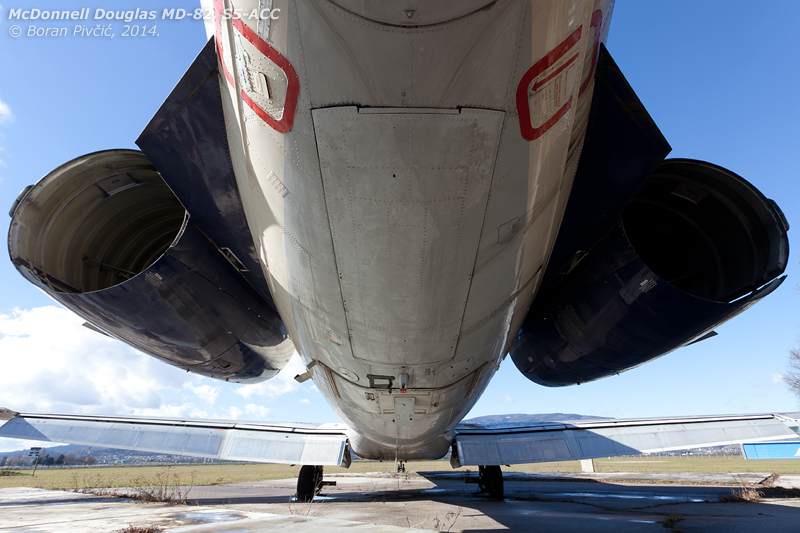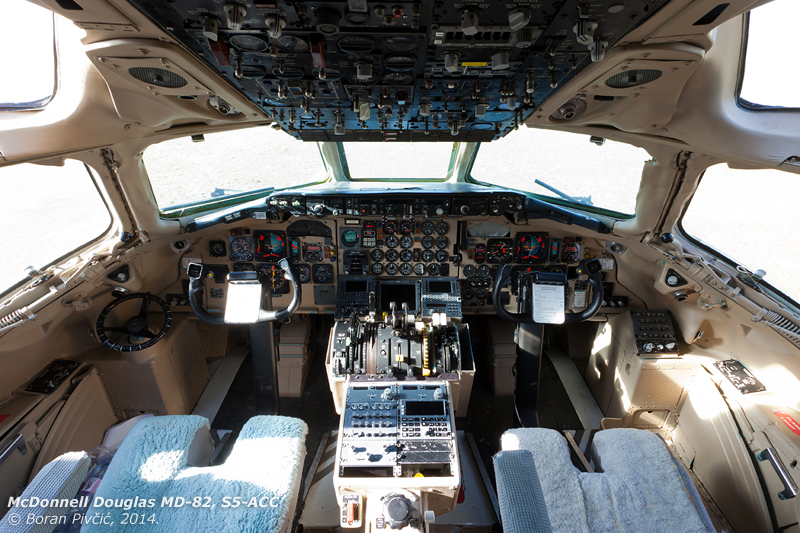By me
All photos me too, copyrighted
While the summer season of 2018 was not really my most productive one (and is far below the bar set by 2017, which gave us classics such as this and this and particularly this), it nevertheless was not a total bust photography-wise. While I’m still smarting from having missed a couple of proper Achtung, Skyhawk! classics by mere minutes (including a Dash 7), I’ve still managed to hoard enough quality material for one jolly Photo File, to at least keep the ball rolling until something else comes up… 🙂
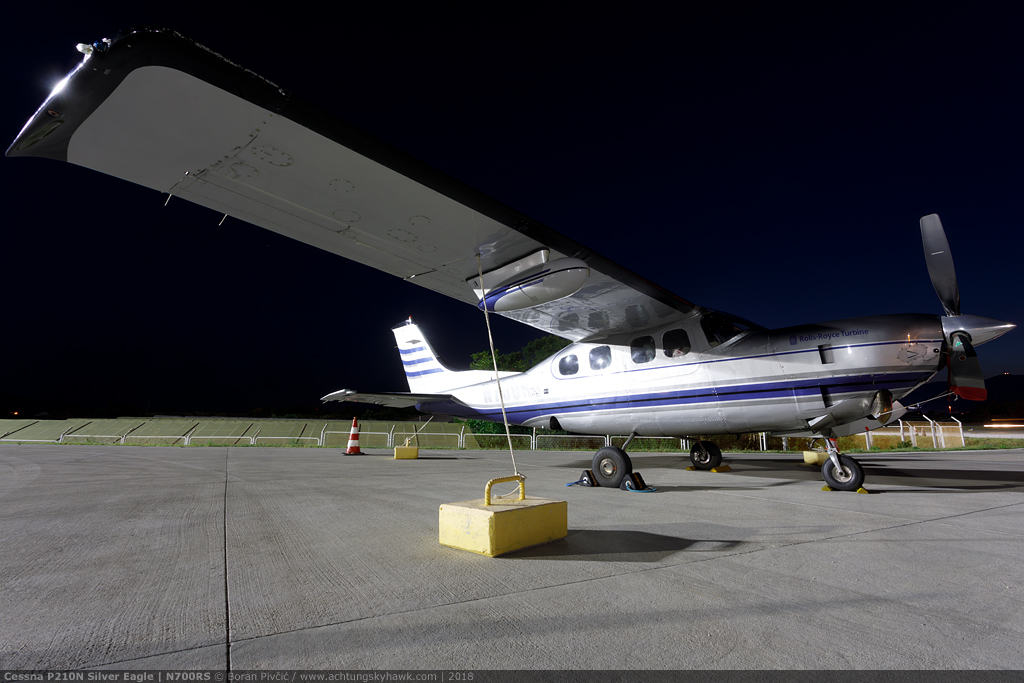
Silver Eagle is silvery! Easily the most popular aftermarket conversion for any Cessna piston single, the Silver Eagle mod entails a major rework of the classic 210 powerplant, substituting its original 310 HP Continental TSIO-520 six cylinder boxer for a 450 HP Allison/Rolls-Royce 250-B17 turboprop – the same type of engine fitted to the most popular helicopter in the West, Bell’s JetRanger. While just the power increase sounds worth the trouble (and cost), the conversion’s real party piece is the engine’s high mass flow, a trait inherent to all turboprop engines. The classic P210 had made its name for its 23,000 ft ceiling, full cabin pressurization and a pneumatic de-ice system for the wing and tail surfaces – all services that require a tremendous amount of compressed air. To cater for all of them, the turbocharger had to massive, which increased weight, maintenance complexity – and occasionally made the engine tricky to operate (especially with regards to shock cooling). Since half of a turboprop is essentially just a large compressor, it handles so much air that it can keep everything sufficiently supplied while still providing a care-free high performance experience – and all for a 158 kg wright reduction (the 250 tips the scales at 96 kg dry vs. the 254 of the TSIO). N700RS also features a frequent optional extra, a weather radar housed in a streamlined dome below the right wing.

Just when I thought it would be G400/G500/G600s or nothing for me here in Europe, into the mix comes this immaculate classic G-III. While you do have to stare at it for awhile to recognize it as an older model, its dead giveaway are the engines, old Rolls-Royce Spey units that are sufficiently loud to warrant the addition of “hush kits” – aftermarket (but certified) silencers that improve mixing between the exhaust gasses and ambient air and reduce the shearing forces between than that are the main “source” of jet engine noise.

Another meeting with the very colorful LY-DSK, which I already had the chance to snap – and elaborate on! – in a previous post. Thankfully, Split Airport (SPU/LDSP) had recently decided to park most of its surplus aircraft steps right on the edge of the GA apron, affording plenty of opportunity to go elevated!
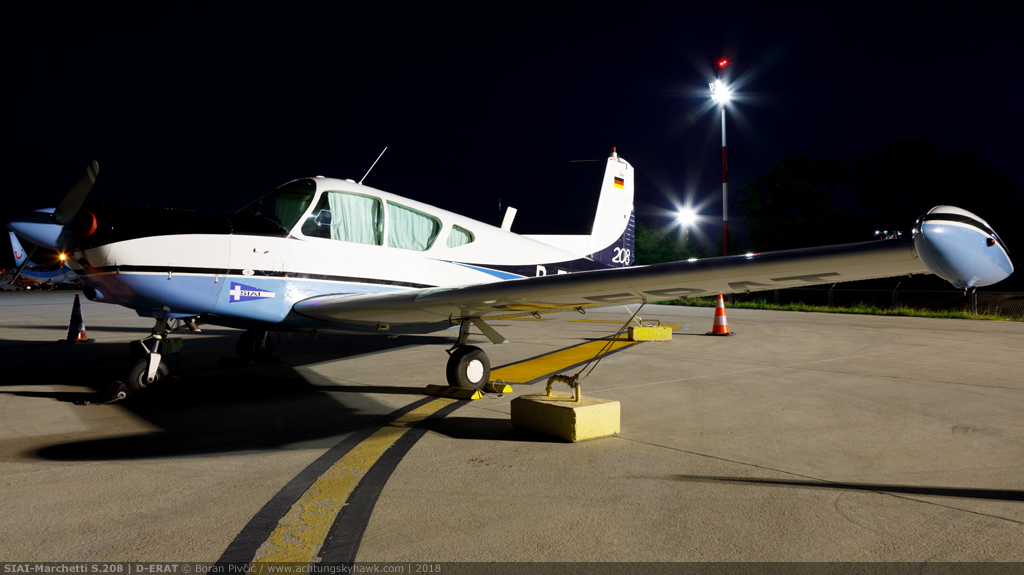
Got contrast? The only proper way to end a working day – with a beautiful GA classic! One of the last mass-produced touring types developed by Italy’s traditional large manufacturers, the original S.205 was conceived in the mid 60s along similar lines as the contemporary Piper PA-28: a simple but versatile aircraft that could be developed into a diverse product family with comparatively little effort. To this end, the basic four-seat fixed-gear S.205F was quickly followed by the retractable S.205R and the more powerful five-seat S.208 – with the top of the range dominated by the planned six-seat S.206 and the S.210 twin. Unfortunately, despite the type’s undoubted qualities and robust build, it would nevertheless never fulfill its potential, SIAI-Marchetti having always lacked the production capacity, support and market reach of its Big Three rivals across the Pond…
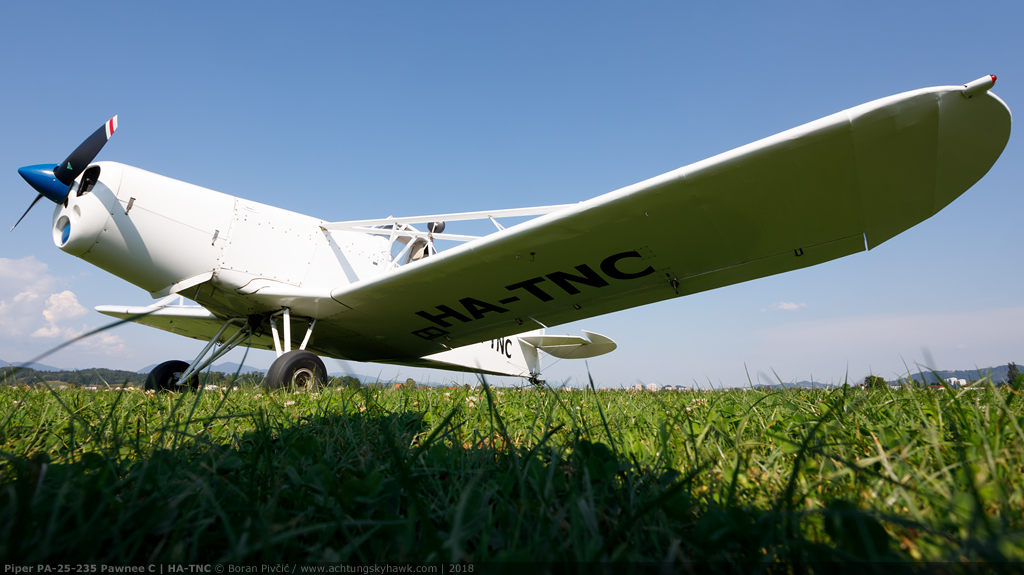
The primary towplane of the Celje Flying Club intimidating ants as it awaits the start of the afternoon soaring session at Slovenia’s Celje Airfield (LJCL). An aircraft with a history dating all the way back to 70s Yugoslavia, TNC had during the early 2000s been a resident of my base airfield of Lučko (LDZL), where it had intrigued me – a green student pilot – with its unwieldy and lumpy looks. Despite not being easy on the eye, the Pawnee had far outlived its original role of cropduster, becoming the staple of glider clubs all over the world.

“Molki” throwing out the anchor as it decelerates after a training flight round the Celje Airfield (LJCL) circuit. Developed in the late 80s based on operational experience from the original L-13 Blanik, the L-23 came equipped with a completely new swept T-tail, a slightly larger cabin with new high-vis canopy (one piece on later models, such as this one) – and a revised wing that did away with the 13’s large flaps. Though it had bettered its dad in almost all respects, the Super Blanik would nevertheless fail to replicate its market success, with only limited numbers having been sold in Europe. Interestingly, the type had made somewhat of a name for itself overseas, with 12 examples used by the US Civil Air Patrol as trainers under the designation TG-10B Merlin.
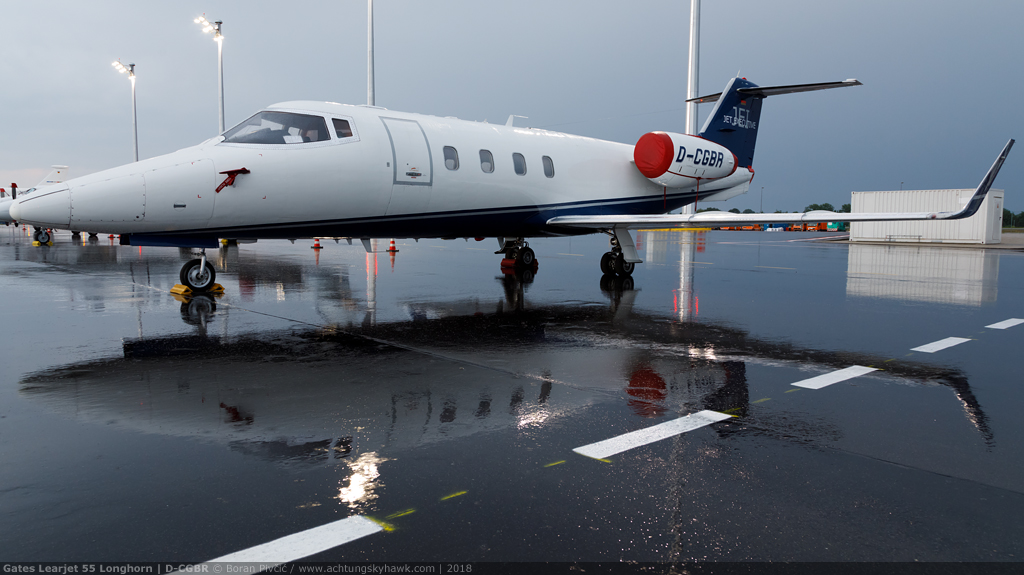
Mirror mirror on the apron, which Learjet should I escape on? The 55 Longhorn you say? No problem! The first of the so-called “large cabin” Learjets, the model 55 was intended to be the starting point for a whole series of “premium” models (such as the shortened 54 and lengthened 56), but a tough market and lots of competition in the early 80s meant that the 55/55A/55B and 55C was as far as it ever made it. Even though the family would later serve as the basis for the very successful 60 series, the 55 was nevertheless a total sales flop, with just 147 having been sold during an eight year production run. Of particular interest is its Longhorn nickname – after a breed of Texas bull – which actually has a long association with the LJ line. The first model to carry it was the mid 70s 28, which had swapped the original 23’s characteristic tip tanks for a pair of imposing, NASA-designed winglets – becoming the first production bizjet to be so equipped. As they became a standard feature on all future Learjets, the Longhorn name was left to slowly fade, eventually dying out with the 55…
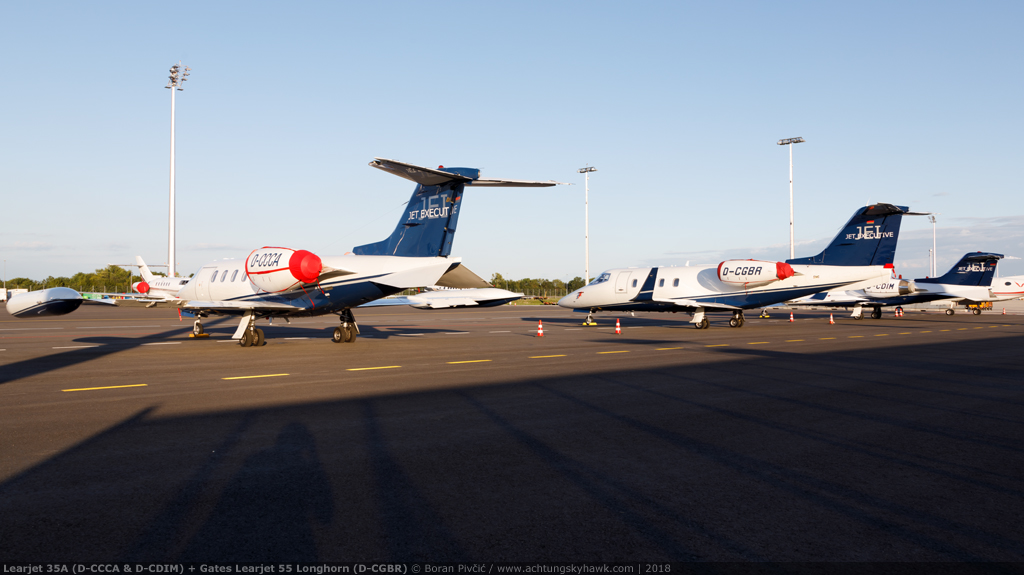
For most, a bunch of useless old relics… for Learjet fans, pure pornography! Winglets vs tip tanks as the very attractive fleet of Munich (MUC/EDDM)-based Jet Executive catches some rays on a beautiful summer afternoon. A round of beer for the folks responsible for keeping these machines in the air!

No horizons in the future for Future Horizon as it continues to deteriorate for another year in a remote corner of Dubrovnik Airport (DBV/LDDU). Not a stranger to my camera, DGS was the odd man out in the fleet of MD-80s operated by Air Adriatic, one of Croatia’s first post-independence private airlines (though it was actually owned by a local investment company). Formed in 2001 and well known locally for giving its aircraft names that bordered on the cheesy, Air Adriatic would eventually fold in 2007 when its finances were exhausted, leaving the fleet stranded at various airports in the Balkans. While some of its MDs did survive in some form or another (as fire trainers of museum exhibits), DSG today remains pretty much the last visible example of the carrier’s existence…

I go and visit Lučko for the first time in a month and straight out of the gate have this to see: 280 HP, 350 km/h, 20,000 ft – and a bucketload of charisma characteristic of all Mooney designs. Ever since the original single-seat M18 Mite, all of the company’s aircraft could boast impressive speeds for their power, outstanding performance and flight characteristics all round – and dragging tails with “flipped” vertical stabilizers (which Al Mooney claimed improved yaw control in a stall). Even though it had been under Chinese ownership for some time now, today’s Mooney remains true to its origins, with the top-of-the-line Acclaim Type S pushing a jaw-dropping 470 km/h with a turbocharged version of the Ovation’s engine… (and for those interested, the small mosquito at the top of the screen is actually Mi-8MTV-1 “215” of the Croatian Air Force)
EDIT: and a bit of video as well… when you need a break from boring a hole in the sky, you can rent a Skyhawk and go get in the way at a neighboring airbase. The guy up in the tower must have died laughing: PC-9s regularly fly high speed breaks down the runway, occasionally even F-16s “request permission for flyby”… and into the mix comes me with a 40 year old 172 doing a blistering 125 knots…



